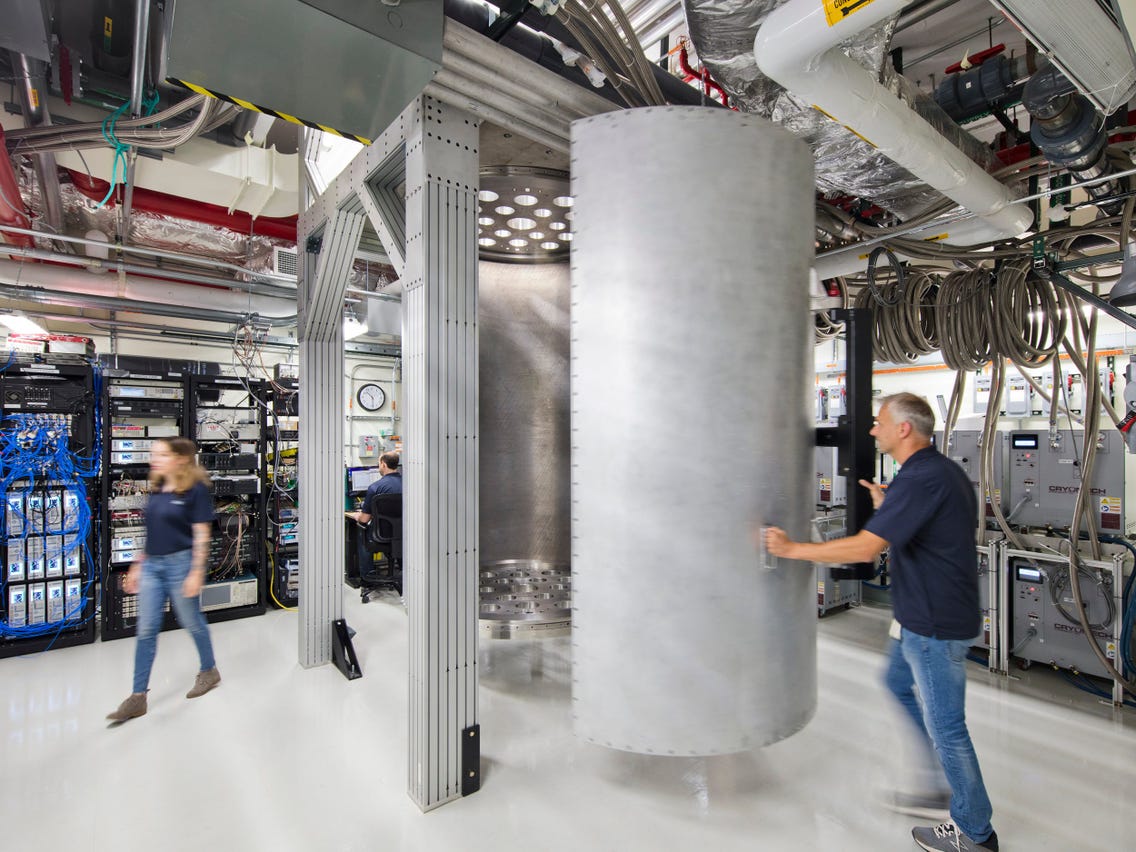We’re still a long way from realising the full potential of quantum computing, but scientists are making progress all the time – and as a sign of what might be coming, IBM now says it expects to have a 1,000 qubit machine up and running by 2023.
Qubits are the quantum equivalents of classical computing bits, able to be set not just as a 1 or a 0, but as a superposition state that can represent both 1 and 0 at the same time. This deceptively simple property has the potential to revolutionise the amount of computing power at our disposal.
With the IBM Quantum Condor planned for 2023 – running 1,121 qubits, to be exact – we should start to see quantum computers start to tackle a substantial number of genuine real-world calculations, rather than being restricted to laboratory experiments.

“We think of Condor as an inflection point, a milestone that marks our ability to implement error correction and scale up our devices, while simultaneously complex enough to explore potential Quantum Advantages – problems that we can solve more efficiently on a quantum computer than on the world’s best supercomputers,” writes physicist Jay Gambetta, IBM Fellow and Vice President of IBM Quantum.
It’s a bold target to set, considering IBM’s biggest quantum computer to date holds just 65 qubits. The company says it plans to have a 127-qubit machine ready in 2021, a 433-qubit one available in 2022, and a computer holding a million qubits at… some unspecified point in the future.
Today’s quantum computers require very delicate, ultra-cold setups and are easily knocked off course by almost any kind of atmospheric interference or noise – not ideal if you’re trying to crunch some numbers on the quantum level.
What having more qubits does is provide better error correction, a crucial process in any computer that makes sure calculations are accurate and reliable, and reduces the impact of interference.
The complex nature of quantum computing means error correction is more of a challenge than normal. Unfortunately, getting qubits to play nice together is incredibly difficult, which is why we’re only seeing quantum computers with qubits in the 10’s right now.
Around 1,000 qubits in total still wouldn’t be enough to take on full-scale quantum computing challenges, but it would be enough to maintain a small number of stable, logical qubit systems that could then interact with each other.
And while it would take more like a million qubits to truly realise the potential of quantum computing, we’re seeing steady progress each year – from achieving quantum teleportation between computer chips, to simulating chemical reactions.
IBM hopes that by committing itself to these targets, it can better focus its quantum computing efforts, and that other companies working in the same space will know what to expect over the coming years – adding a little bit of certainty to an unpredictable field.
“We’ve gotten to the point where there is enough aggregate investment going on, that it is really important to start having coordination mechanisms and signaling mechanisms so that we’re not grossly misallocating resources and we allow everybody to do their piece,” technologist Dario Gil, senior executive at IBM, told TechCrunch.








 Photographer Finds Locations Of 1960s Postcards To See How They Look Today, And The Difference Is Unbelievable
Photographer Finds Locations Of 1960s Postcards To See How They Look Today, And The Difference Is Unbelievable  Hij zet 3 IKEA kastjes tegen elkaar aan en maakt dit voor zijn vrouw…Wat een gaaf resultaat!!
Hij zet 3 IKEA kastjes tegen elkaar aan en maakt dit voor zijn vrouw…Wat een gaaf resultaat!!  Scientists Discover 512-Year-Old Shark, Which Would Be The Oldest Living Vertebrate On The Planet
Scientists Discover 512-Year-Old Shark, Which Would Be The Oldest Living Vertebrate On The Planet  Hus til salg er kun 22 kvadratmeter – men vent til du ser det indvendigt
Hus til salg er kun 22 kvadratmeter – men vent til du ser det indvendigt  Superknepet – så blir snuskiga ugnsformen som ny igen!
Superknepet – så blir snuskiga ugnsformen som ny igen!  Meteorite That Recently Fell in Somalia Turns Out to Contain Two Minerals Never Before Seen on Earth
Meteorite That Recently Fell in Somalia Turns Out to Contain Two Minerals Never Before Seen on Earth  Nearly Frozen Waves Captured On Camera By Nantucket Photographer
Nearly Frozen Waves Captured On Camera By Nantucket Photographer  It’s Official: Astronomers Have Discovered another Earth
It’s Official: Astronomers Have Discovered another Earth 